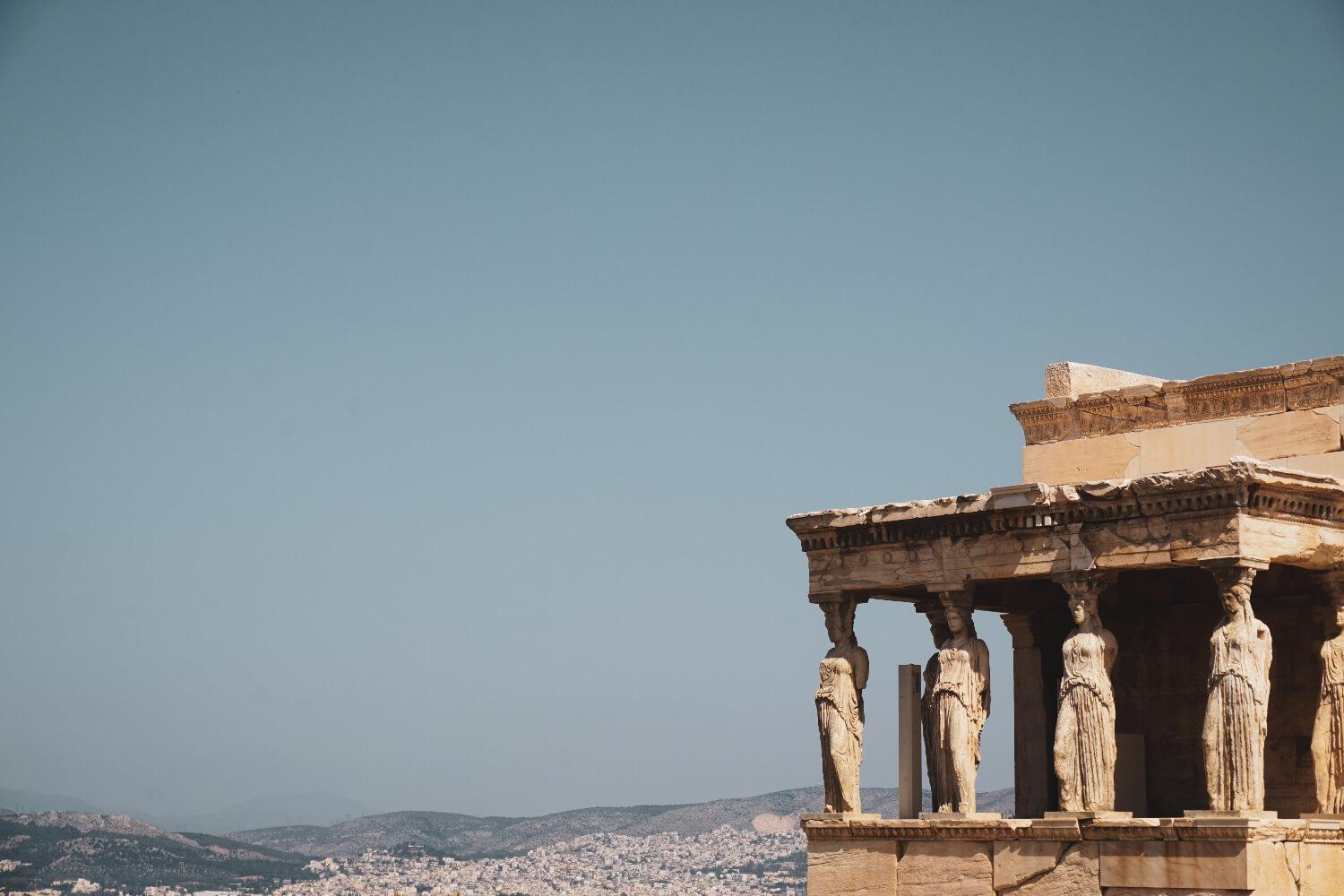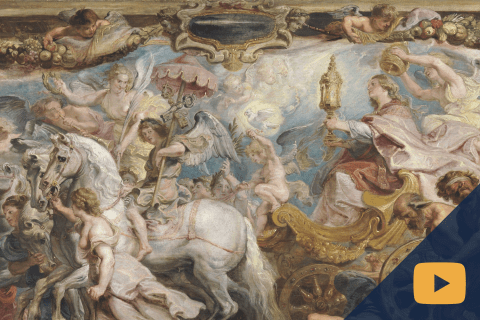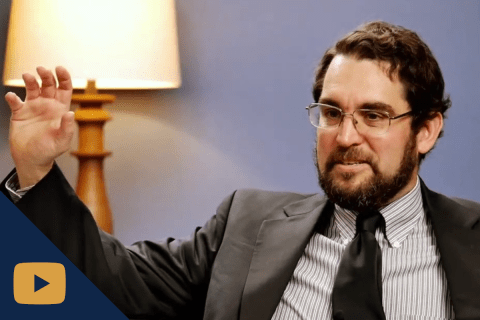
What is the purpose of founding and maintaining institutions, as opposed to leaving individuals at liberty to pursue their own ends? As it happens, institutions are vitally important to human social life, and a well-developed “institutional imagination” is a key quality of good leadership.
Institutions fascinate the historian and the social scientist because they reveal how a people put their ideas and beliefs into practice in response to social opportunities and needs around them. Thus, institutions are the nexus where a vision takes on flesh and changes the culture of a people. In each age of Christian history, we can discern two principles governing the life of institutions: first, the principle of responding to contemporary needs, and second, the principle of preserving continuity. The great figures who have arisen and helped to shape civilization as we know it today have possessed the practical creativity necessary to inaugurate and sustain institutions. They have possessed insight into the social situation and the spiritual needs contemporary to them, listening to the murmur of the human race. From such insights they have formed visions, incarnating those visions into intuitional structures fundamentally independent of any one person, including themselves.
We see an obvious example of institutional imagination in the person of St. Benedict, who responded to the disintegration of life around him after the end of the Roman Empire in the West through the development of institutions. Possessed of the organizational genius of his Roman countrymen, Benedict established a monastic way of life in the sixth century that stands as the original institutional form of monastic life in the West. Benedict’s followers have lived within the well-regulated plan of life characteristic of his monastic institution, witnessing to the light of Christ by lives of prayer, manual work, and study, for centuries. It was through these monastic institutions that the wisdom of both Jerusalem and Athens – the foundations of Western civilization – were preserved. It should come as no surprise the Benedict is recognized as a patron saint of Europe.
In each age of Christian history, we can discern two principles governing the life of institutions: first, the principle of responding to contemporary needs, and second, the principle of preserving continuity.
As Europe entered a time of greater economic prosperity by the eleventh and twelfth centuries (due in no small part to the Benedict-inspired monastic institutions the blanketed Christendom), new needs arose. In the thriving Italian commune of Assisi, for example, St. Francis reacted to the prominent social divisions and economic exploitation of his commercial environment by living a life of radical poverty, going out to preach and help the poorest of the poor in imitation of Christ. The mendicant order he founded incarnated his vision of radical discipleship and extended his influence through the centuries.
Yet again, centuries later, the need to educate the poor of seventeenth-century France inspired the rise of new institutions through a man of imagination, St. John Baptiste de la Salle. Having been in contact with poor children early in life, their pitiful ignorance moved him to found the Institution of the Brothers of the Christian Schools (commonly known as the “Christian Brothers”). In addition, John Baptiste eventually founded what is generally regarded as the first teachers’ college (the École Normale in Reims in 1685). The Christian Brothers have lasted through generations, educating well over 850,000 students worldwide today.
Across the Atlantic Ocean, George Washington articulated the second principle of institutional life mentioned above – preserving continuity – in his 1796 “Farewell Address,” saying “time and habit are at least as necessary to fix the true characters of governments as of other institutions.” Thus, the great test of an institution is its ability to preserve and adapt itself across generations. This continuity of vision not only serves to unify the institution but also calls people to heroic efforts in furthering that enduring vision.
Among those institutions that have most clearly passed the test of continuity are universities and academies. Medieval universities first arose as independent corporations of students or scholars, like craft guilds of the intellectual life. These institutions were first developed at Bologna and Paris (in the late eleventh and mid-twelfth centuries, respectively) in response to Europe’s new educational opportunities (arising from the rediscovery of Roman law, Aristotelian logic, philosophy, and natural science) and new academic needs (such as the training of lawyers, civil and canon, as well as clergy). Similar institutions – academies – arose in the Italian Renaissance centuries later, as societies of independent scholars eschewing utilitarian ends in order to pursue scientific, philosophical, and literary studies for their own sake.
Those who work day after day in the hallways of hospitals or the classrooms of colleges can connect – through the institutional imagination – their seemingly insignificant tasks to the original inspiration and human need on which the entire venture was founded.
Together, the European universities and academies helped to create a culture favorable to empirical study and the natural sciences. This is one important reason why modern science arose in Christian Europe, despite the high achievements of individual scientists in the medieval Muslim world. As Hillil Ofek argued in “Why the Arabic World Turned Away from Science,” a culture particularly hospitable to science was born in medieval and Renaissance Europe. This culture was centered in the life of relatively independent institutions, some of which still exist today. The Christian theological vision distinguished between faith and reason, and between religious and political ends. Such distinctions made it possible to develop the legal basis necessary for autonomous, subsidiary institutions within Christian culture, and these institutions had a tremendous impact through continuity.
The historian Christopher Dawson wrote, “As the Church is the extension of the Incarnation, so Christian culture is the embodiment of Christianity in social institutions and patterns of life and behavior.” Each age of Christianity possesses its specific institutions that arise or adapt to respond to the opportunities and the spiritual problems of their time, and in each age the renewal of the culture depends on those institutional realities.
Institutional imagination stands as the practical response to recognizing the needs of one’s time and the desire to preserve the continuity of a greater incarnated vision. With the humility of Christ, those who possess such institutional imagination are capable of enlivening even banal tasks such as filing papers, submitting accreditation reports, and cleaning toilets. Those who work day after day in the hallways of hospitals or the classrooms of colleges can connect – through the institutional imagination – their seemingly insignificant tasks to the original inspiration and human need on which the entire venture was founded. They can thus participate in something larger than themselves, fulfilling their desire for meaning.


